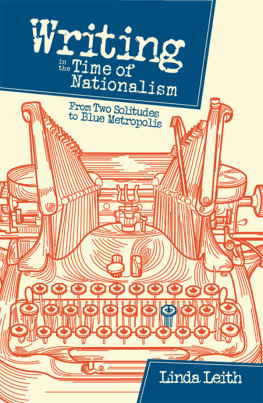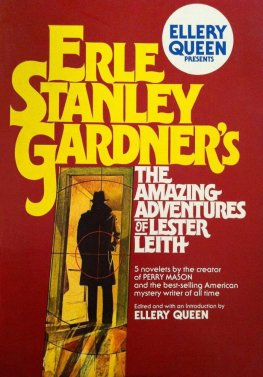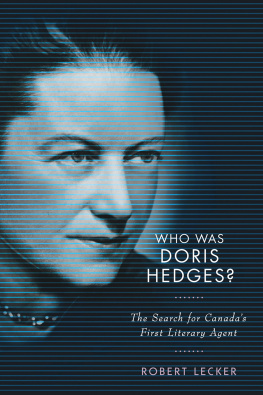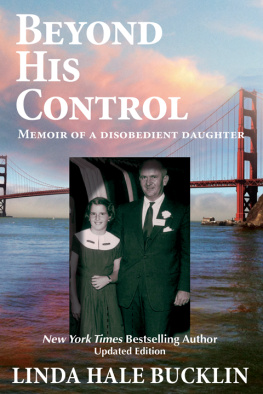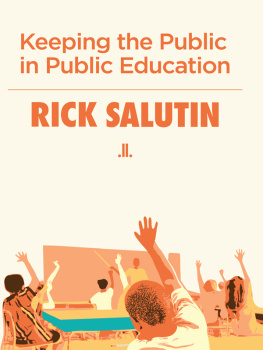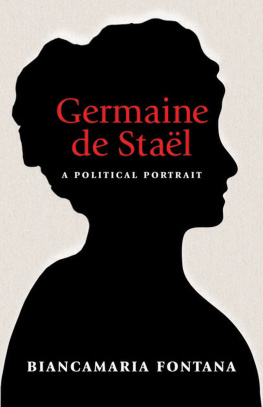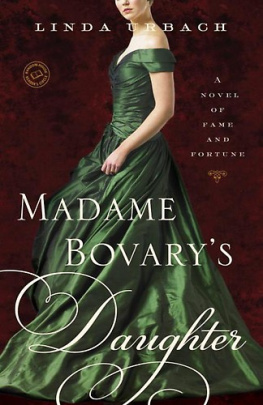The
Girl
f r om
D rea m
C ity
Also by Linda Leith
Fiction
Birds of Passage (1993)
The Tragedy Queen (1995)
The Desert Lake (2006)
Literary Non-fiction
Introducing Hugh MacLennans Two Solitudes (1990)
Marrying Hungary (2008)
Writing in the Time of Nationalism (2010)
Anthology
Telling Differences: New English Fiction from Quebec (1988)
Translation
Travels with an Umbrella: An Irish Journey , translation into English of Voyage en Irlande avec un parapluie , by Louis Gauthier (2004)
Essay
Montreal in Wartime , introduction to Mavis Gallants play What Is To Be Done? (2017)
For Nan and Desmond,
and Granny Jo,
with love.
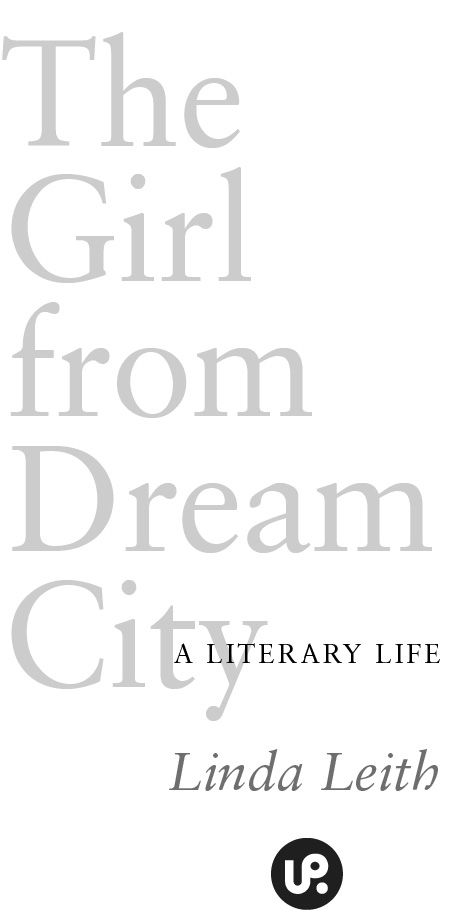
2021 Linda Leith
All rights reserved. No part of this work covered by the copyrights hereon may be reproduced or used in any form or by any meansgraphic, electronic, or mechanicalwithout the prior written permission of the publisher. Any request for photocopying, recording, taping or placement in information storage and retrieval systems of any sort shall be directed in writing to Access Copyright.
Printed and bound in Canada at Imprimerie Gauvin. The text of this book is printed on 100% post-consumer recycled paper with earth-friendly vegetable-based inks.
Cover and text design: Duncan Noel Campbell
Copy editor: Kendra Ward Proofreader: Caley Clements
Cover art: Paris, France by Pierre Chtel-Innocenti / Unsplash.
Library and Archives Canada Cataloguing in Publication
Title: The girl from Dream City : a literary life / Linda Leith.
Names: Leith, Linda, author.
Series: Regina collection.
Description: Series statement: The Regina collection
Identifiers: Canadiana (print) 20200367501 | Canadiana (ebook) 20200368052 | ISBN 9780889777859 (softcover) | ISBN 9780889777873 ( PDF ) | ISBN 9780889777897 ( EPUB )
Subjects: LCSH: Leith, Linda. | CSH : Authors, Canadian (English)20th centuryBiography. | LCSH : Montral (Qubec)Biography. | LCSH : Montral (Qubec)Intellectual life.| LCGFT : Autobiographies.
Classification: LCC PS8573.E49 Z46 2021 | DDC C813/.54 dc23

University of Regina, Regina, Saskatchewan, Canada, S4S 0A2 tel: (306) 585-4758 fax: (306) 585-4699 web: www.uofrpress.ca
0 9 8 7 6 5 4 3 2 1
We acknowledge the support of the Canada Council for the Arts for our publishing program. We acknowledge the financial support of the Government of Canada. / Nous reconnaissons lappui financier du gouvernement du Canada. This publication was made possible with support from Creative Saskatchewans Book Publishing Production Grant Program.

Contents
Half-Told
and
Half-Forgotten
Whatever you say, say nothing. Seamus Heaney , North
The Country Doctor
When did Daddy propose to you? I asked my mother, when I was old enough to wonder.
She hesitated. I dont think he ever did, she said finally. She didnt refuse to answer; she simply said as little as possible. We just knew.
I couldnt leave it at that. Knew what?
We just knew we would get married.
Not a word more. She was such a private woman.
I wasnt satisfied. Id wanted a story about a declaration. A ring, anyway. It was impossible to picture my father on bended knee.
Im older now, and wiser, and I know romance when I see it. Sparing with words as my mother was, those were good words.
She had been born in 1922, the year the Irish Free State came into being. Her parents had named her Annie May, after the Chinese-American movie star Anna May Wong, but she always insisted on being called Nan.
Her own mother had, as it happened, also chosen her own name, Join her case inspired by Jo March in Little Women . So, this was one thing my mother and grandmother had in common.
They were both bookish, too. When Nan was ill with a pulmonary disorder as a child, she took advantage of months of enforced idleness to read her way through the novels of Charles Dickens, which her mother borrowed on her weekly visits to the Linen Hall Library. On her return to school, she was an outstanding student, especially good at mathematics, and in her final year at Methodist College Belfast, she was offered a place at Trinity College Dublin.
Not having the means to send her to Trinity, her father appealed to his own father, who was well-to-do. He refused to help. The Ulster population, like the Scottish, valued education, but most of the time that meant education for men. There was no point in educating a woman, the argument went; a woman would get married and have children.
It was the great disappointment of Nans life that she never got to university. She stayed in Belfast, became a teacher, and met Desmond Leith, who was a medical student at Queens University.
Desmonds parents had been no more able than Nans to send him to university, his own father having been a carpenter in the Belfast shipyards. But Desmond, too, had rich relativeshis mothers entrepreneurial brothersand they were happy to cover the cost of sending him to Inst, the Royal Belfast Academical Institution, and then to Queens.
Nan and Desmond were like a Hollywood couple. Scarcely five feet tall, Nan was a glamorous redhead with clear blue eyes and high cheekbones, the very image of femininity. Desmond was brilliant, ambitious, and dashing. A missing front tooth, knocked out during a school cricket match, lent him an air of danger, like a buccaneer.
Desmond qualified in 1947, winning the university prize in gynecology, obstetrics, and surgery. Nan resigned her teaching position; they were married that summer and moved to the linen town of Lisburn, where my father spent five years as a country doctor. They had their first child, my brother Ian, the following spring, and I was born in late 1949.
Most patients saw Daddy in the surgery, but he made house calls, too. The telephone rang, and he picked up his heavy black bag and headed off at all hours to deliver a baby or tend to an ailing patient. Farm families who were short of cash stopped by the house with fresh produce, which was as precious as rubies in those days of postwar rationing. Some of them continued to show their appreciation to the young doctor even after the National Health Service came in.
So, our kitchen table was laden with churned butter and eggs. Well have cake for our tea, Mummy said, pulling her apron over her head and tying it behind her.
She turned on the oven and took sugar and flour down from the shelf. She prepared the cake tin with the butter wrapper and a dusting of flour, then pulled out the crockery bowl from under the counter, a wooden spoon from the drawer, and a measuring cup from the cupboard.
Shed learned how to bake from scrupulous Methodist teachers. Ian stood with his fingers on the edge of the counter, watching her every move. I sat in the high chair, mesmerized.
Nan held the big bowl in the crook of her arm and creamed the butter with sugar before cracking the eggs into the mix and stirring until it was all gloopy. She measured the flour and sifted it with baking soda and a pinch of salt, folded the dry ingredients into the wet, then tipped the contents of the bowl into the tin and popped it in the oven.
Ian got to lick the spoon, and I scraped the bowl.
The soundtrack of our days was dominated by politics. It was in 1948 that the Labour government brought in the National Health Service, and there was never a time that I didnt hear about that. So, I knew more than most little girls about NHS coverage of vision care, which was cut when it proved too costly.
Next page

